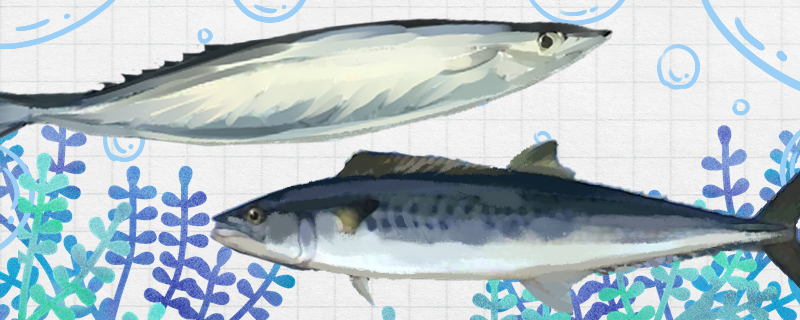
Both saury and Spanish mackerel belong to fish, and both belong to fish in the class Osteichthyes. From the point of view of edible value, saury and Spanish mackerel are edible, and the nutritional value is relatively high. From the appearance, there are some similarities between the two, and sometimes the body shape is the same. However, saury and Spanish mackerel do not belong to the same kind of fish. Although they have the same points as mentioned above, there are also many differences between them, so they should not be confused.
2. What are the differences between saury and Spanish mackerel
1. Genera: Although both saury and Spanish mackerel belong to the class Osteichthyes, the specific orders and families to which they belong are different. Cololabis saira is the jaw needle fish order, saury family, and Spanish mackerel belongs to Perciformes, Spanish mackerel family.
2. Appearance difference: There are some differences between the appearance of saury and Spanish mackerel. For example, their color is also a certain difference, the back of the saury is dark gray blue, the abdomen is silvery white; Spanish mackerel is silver and bright as a whole. Their shape also has certain difference, the shape of saury is more round, is round stick shape, and the shape of Spanish mackerel is flat. Their size is also different, the body length of saury is about 35 centimeters, while that of Spanish mackerel is between 25-50 centimeters.
3. Different distribution areas: The distribution areas of Pacific saury and Spanish mackerel are also different. Cololabis saury is mainly distributed in the northern part of the Pacific Ocean, such as the Bering Sea, the Sea of Japan, etc. Spanish Mackerel is mainly distributed in the western part of the North Pacific Ocean, mainly in the Yellow Sea, East China Sea and other sea areas in China.
4. Different effects: Both can be eaten, but the specific effects will be different. The saury has certain alleviation hypertension's function, but the Spanish Mackerel has the good blood, the fill gas function.